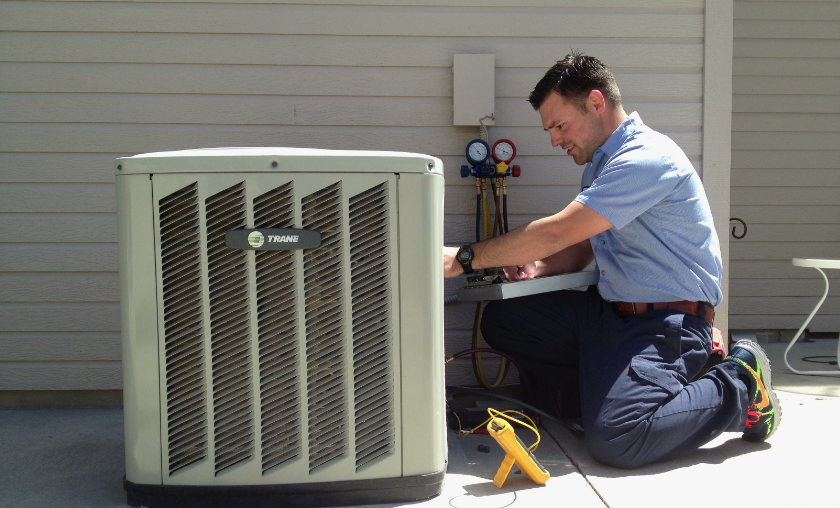An HVAC system is a crucial component of any home or business, ensuring comfort and air quality throughout the year. Once you complete an HVAC System Installation, testing the system properly is essential to verify its performance, efficiency, and safety. Proper testing helps detect potential issues early and ensures the system operates as intended.
In this guide, we will walk you through the necessary steps to test your HVAC system after installation. Whether you are a homeowner or a business owner, these steps will help you get the most out of your system while avoiding costly repairs down the line.
Step-by-Step Guide to Testing Your HVAC System
1. Inspect the System Components
Before turning on your newly installed HVAC system, perform a thorough visual inspection. Look for any loose wires, leaks, or misplaced components. Some key areas to check include:
- Air ducts – Ensure there are no leaks or gaps.
- Filters – Confirm that air filters are installed correctly and clean.
- Thermostat – Make sure it is properly connected and functional.
- Condensate Drain Line – Verify that it is free of clogs and properly draining.
This initial check helps prevent potential malfunctions once the system is powered on.
2. Turn On the System and Monitor Performance
After completing the inspection, power on the HVAC system. Here’s what to do next:
- Set the thermostat to a comfortable temperature.
- Observe how the system responds.
- Listen for unusual noises like banging, clicking, or rattling.
- Check for any error messages on the thermostat or control panel.
If the system does not start or behaves abnormally, double-check the power supply and connections.
3. Test Airflow and Temperature Regulation
Once the system is running, test airflow from vents in different rooms. Here’s how:
- Hold your hand near the vents and check for consistent airflow.
- Use a thermometer to compare the temperature of air coming from the vents with the thermostat setting.
- Ensure that all rooms receive adequate airflow and temperature regulation.
If some rooms feel significantly warmer or cooler than others, you may need to balance the air distribution.
4. Check for Leaks in the Ductwork
Leaks in the ductwork can lead to energy waste and reduced efficiency. Perform a simple test:
- Run your hands along exposed ductwork to feel for escaping air.
- Use an incense stick or tissue near joints to detect leaks.
- If you suspect a leak, seal it with HVAC-approved tape or consult a professional.
5. Monitor Energy Efficiency
A properly installed HVAC system should operate efficiently. Keep an eye on:
- Energy bills – A sudden spike could indicate an issue.
- System cycling – If the system turns on and off too frequently, it may be struggling to maintain temperature.
- Thermostat readings – Ensure they align with actual room temperatures.
If you notice inefficiencies, you may need to adjust thermostat settings, inspect insulation, or seek professional help.
6. Inspect Refrigerant Levels (For Cooling Systems)
Refrigerant levels play a vital role in cooling efficiency. Signs of low refrigerant include:
- Warm air coming from vents.
- Ice buildup on refrigerant lines.
- Hissing noises indicate a possible leak.
Low refrigerant levels should be addressed by a certified HVAC technician to avoid long-term damage.
7. Evaluate the Heating Function
If you installed a heating system, test it by:
- Switching to heat mode on the thermostat.
- Checking if warm air flows from the vents.
- Listening for strange noises that could indicate burner or blower issues.
If the heating system does not respond or fails to reach the set temperature, a professional inspection may be required.
8. Test Safety Features
HVAC systems include safety features to protect against hazards. Verify the following:
- Carbon monoxide detectors (if applicable) are functioning.
- Automatic shut-off mechanisms respond correctly.
- Circuit breakers are not tripping repeatedly.
Ensuring these safety features work properly can prevent serious issues such as gas leaks or electrical hazards.
9. Schedule a Professional Inspection
Even after thorough self-testing, it’s a good idea to schedule a professional inspection. An HVAC technician can:
- Perform advanced diagnostics.
- Check refrigerant pressures.
- Calibrate thermostat settings.
- Ensure compliance with local regulations.
Maintenance Tips After Installation
To keep your HVAC system running smoothly, follow these simple maintenance tips:
- Change air filters every 1-3 months.
- Keep vents and registers clean to maintain proper airflow.
- Inspect outdoor units for debris or obstructions.
- Schedule annual maintenance with an HVAC professional.
These steps will help extend the lifespan of your HVAC system and maintain its efficiency.
FAQs
1. How long should I test my HVAC system after installation?
It is recommended to test your HVAC system for at least 24-48 hours. This allows you to monitor performance, detect any irregularities, and ensure everything is functioning properly.
2. What should I do if my HVAC system is making unusual noises?
Unusual noises such as banging, clicking, or hissing could indicate loose components, refrigerant leaks, or duct issues. If the noise persists, turn off the system and consult an HVAC technician.
3. Why is one room colder or hotter than the others?
Uneven heating or cooling may be caused by blocked vents, unbalanced airflow, or duct leaks. Check vent positions and filters, and if the problem persists, contact an HVAC professional to assess your system.
Conclusion
Properly testing your HVAC System Installation is crucial to ensure it operates efficiently and safely. By following the steps outlined in this guide, you can identify potential issues early and take necessary actions to optimize performance. Regular maintenance and professional inspections will help extend the life of your HVAC system, providing comfort and energy savings for years to come.
If you have recently installed a new HVAC system, take the time to conduct these tests and enjoy a well-functioning system in your home or business.

